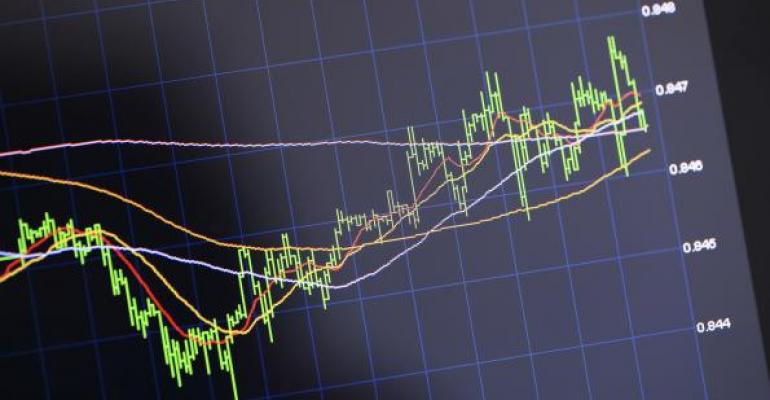Even though the Federal Reserve hasn’t tinkered with the Federal funds target rate since June, interest rates have been ratcheting upward in anticipation of the next reset. Fed funds are at the extreme left end—the short end—of the yield curve. The rate applies to overnight interbank loans of excess reserves.
The Central Bank has direct leverage on the overnight lending rate, but as you move to the right of the yield curve, Fed influence wanes.
You can see what’s happened to the yield curve over the past year in the chart below. As the Fed snugged, then jawboned, rates at short end rose while nothing much happened at the long end. The result? A flattening yield curve.

While the end-to-end flattening has been very dramatic, the effect on the middle of the curve—where many banks and financial institutions are exposed—was no less striking, The 2-to-10-year span is most closely watched as a barometer of bank health. In the past year, it’s been more than halved.
That’s been good news for owners of the iPath US Treasury Flattener ETN (Nasdaq: FLAT), a lightly traded note that provides inverse (-1x) exposure to the Barclays US Treasury 2/10Y Yield Curve Index. The note’s underlying index represents notional investments in Treasury futures by simulating the purchase of two-year note contracts in a three-to-one ratio to the sale of 10-year note futures. The ratio brings the trade into duration neutrality. The index rises as the yield curve steepens, that is when 10-year notes fall (and rates rise) in relation to two-year notes. FLAT, tracking the index’s inverse, gains value when the curve flattens.

Trading interest in the exchange traded note has waned at precisely the time that the note could have been most useful to investors. You can see this reflected in the chart depicting the note’s closing prices and indicative values. Indicative values for exchange traded notes are analogous to the net asset values for mutual or exchange traded funds.
Just as FLAT decisively broke above resistance at $60, volume dried up. For the first six months depicted in the chart, daily volume averaged 9,700 notes per day. There was zero volume on 30 percent of the ETN’s trading days then. In the six months that ensued, zero volume days ballooned to 88 percent as average daily turnover shrank to less than 200 notes.
One explanation: the notes were traded by sophisticated investors as hedges which were lifted as flattening accelerated.
FLAT’s yearlong gain, measured by its indicative value, is 5.8 percent; measured by its closing price, it seems noteholders are ahead by only 3.8 percent.
The privilege of trading FLAT costs 75 basis points (0.75 percent) a year.
There’s reason enough to believe that further flattening’s ahead. Aside from a much-anticipated December Fed funds hike on the horizon, additional upbeat data on GDP, unemployment and consumer spending could drive short-term rates higher still, notwithstanding uncertainties about tax reform legislation.
There may be a less costly, not to mention a more liquid alternative for those adventurous investors who believe the curve is destined to become less curvy: buy longer-dated exposure through the iShares 7-10 Year Treasury Bond ETF (Nasdaq: IEF) against a sale of short paper held by the iShares 1-3 Year Treasury Bond ETF (Nasdaq: SHY).
Daily volume for both iShares portfolios is measured in the millions and their holding cost is a mere 15 basis points per annum. With a 134 million-share float, SHY is easy to borrow.
Given the portfolios’ construction, however, you’d have to trade these in ratio to their volatility, not their average durations. Currently, that means an eight-to-one ratio. That may make this trade a little rich for all but the most sophisticated trader.
Brad Zigler is WealthManagement’s Alternative Investments Editor. Previously, he was the head of Marketing, Research and Education for the Pacific Exchange’s (now NYSE Arca) option market and the iShares complex of exchange traded funds.
